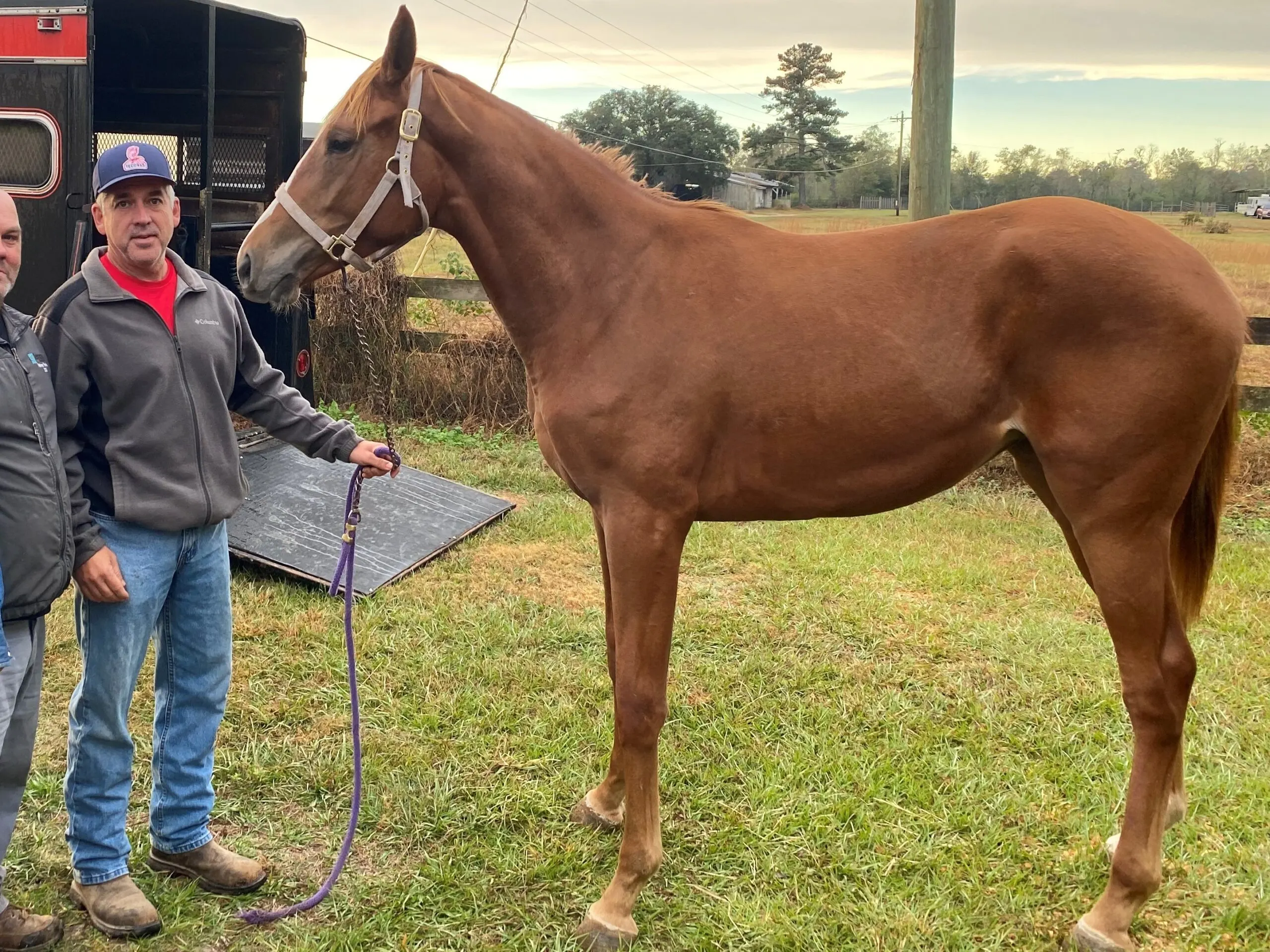Last updated: April 11, 2024
Did you know that Paint Horses are not just admired for their stunning coat patterns but also for their rich history and versatility? Originating from a blend of Spanish horses and wild mustangs, Paint Horses have become symbols of the American West’s spirit. Their distinctive coat patterns—Tobiano, Overo, and Tovero—set them apart, making each horse uniquely beautiful.
As someone who was raised around horses and currently owns six, including one paint horse, I’ve witnessed firsthand the intelligence and adaptability of these magnificent animals. Paint Horses are not just a feast for the eyes; they are hardworking, loyal companions.
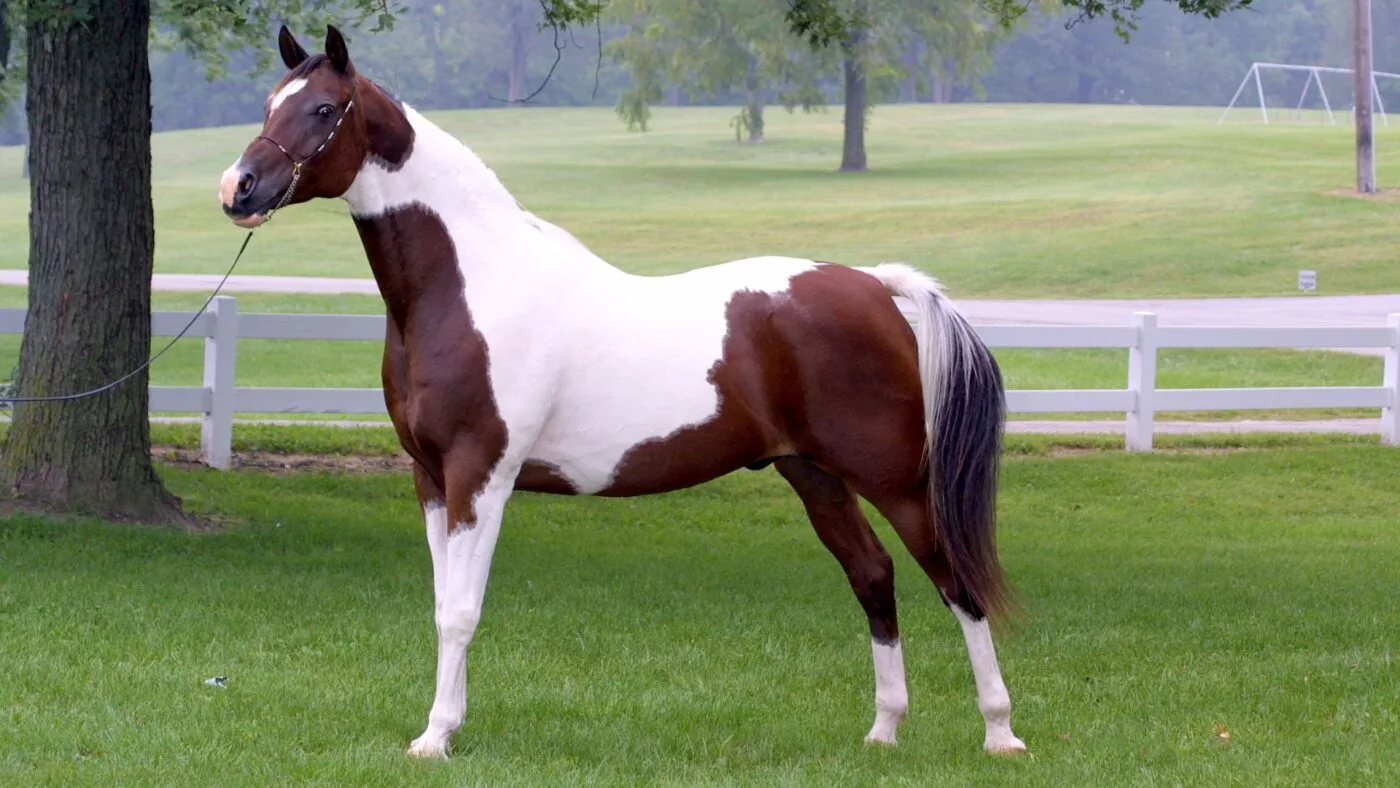
The Origin and History of Paint Horses
Paint Horses have a storied past that intertwines with the history of the Americas. Originating from the horses brought by Spanish explorers, they were embraced by Indigenous peoples and became integral to the culture of the American West.
Their evolution from war mounts to beloved companions showcases their significance across various cultures, symbolizing freedom and resilience.
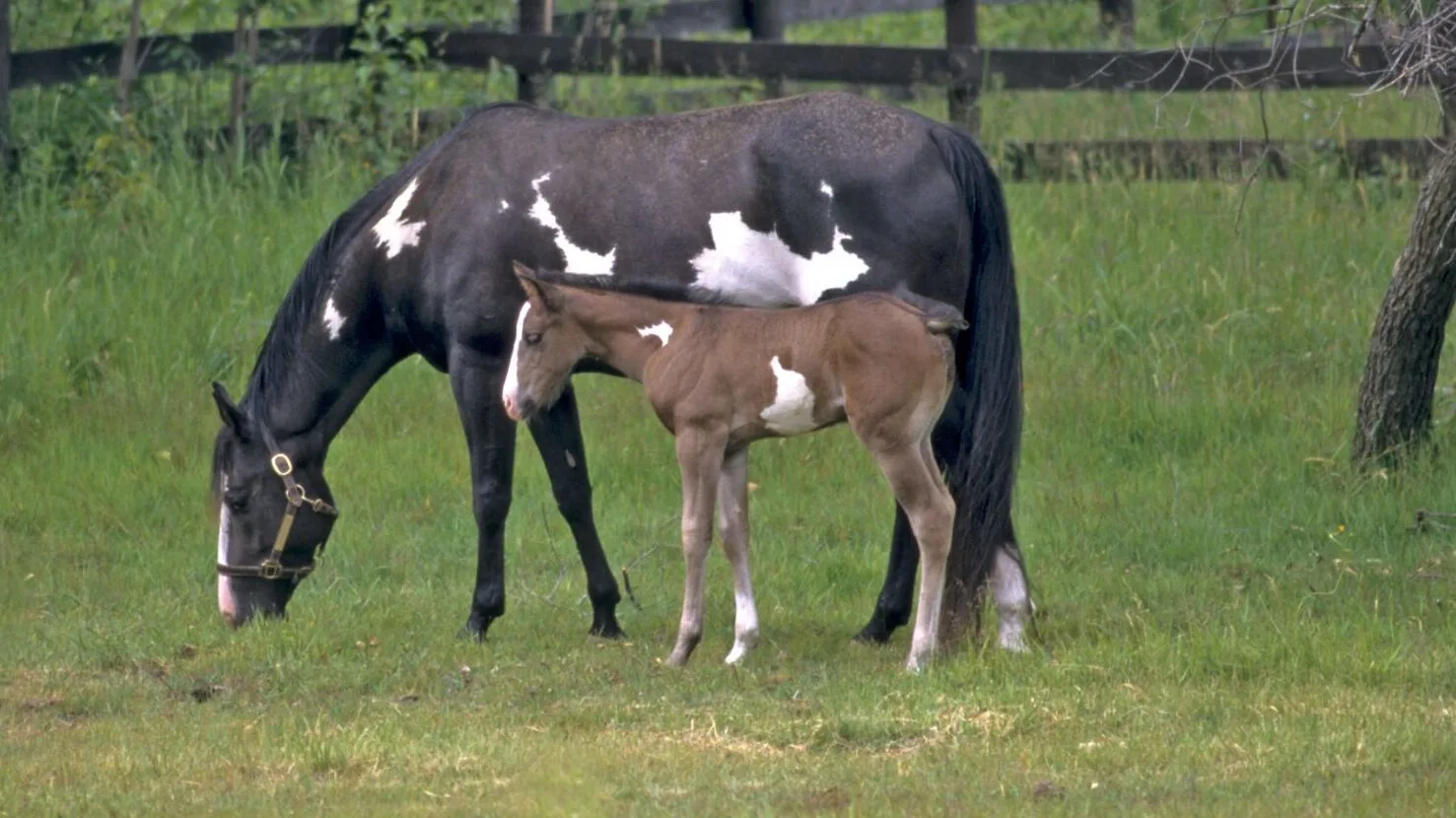
Paint Horse Physical Characteristics
In terms of body structure, American Paint Horses share many similarities with the American Quarter Horse. They typically exhibit:
- A compact, muscular body, ideal for quick starts and stops.
- A broad chest and powerful hindquarters, lending to their agility and speed.
- A short, strong back and well-balanced build, making them versatile for both Western and English riding disciplines.
Unique Coat Patterns
Paint Horses are celebrated for their striking coat patterns, which fall into three main categories:
- Tobiano: Characterized by large, rounded spots over a white base, often with the white crossing the back between the withers and tail.
- Overo: White does not cross the back, and the spots are irregular, often appearing to spread towards the horse’s underside.
- Tovero: A mix of Tobiano and Overo patterns, featuring characteristics of both in unique combinations.
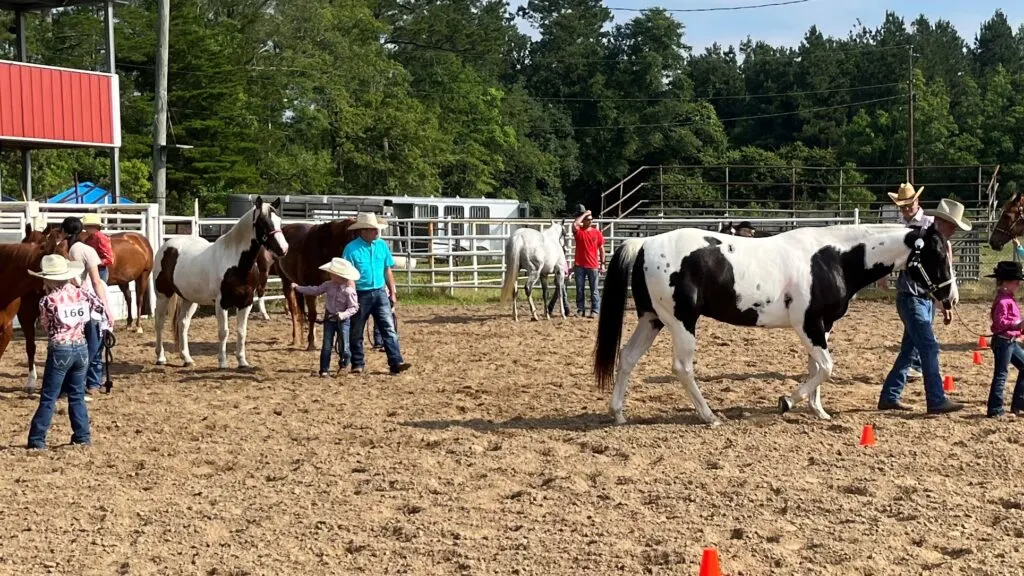
Paint Horse Temperament
Friendly and Calm
Paint Horses are celebrated for their gentle nature. Ideal for riders at all levels, they’re especially great with beginners and children.
Intelligent and Versatile
Their eagerness to learn makes them suitable for a variety of disciplines, from casual trail riding to competitive sports.
Sociable Companions
Known for their strong bond with humans, Paint Horses are not just pets but loyal friends, showcasing their deep connection with their owners.
A Personal Observation
In my experience with various horse breeds, American Paint Horses stand out as a remarkable combination of beauty, intelligence, and adaptability. There’s one Paint Horse I’ll never forget – its agility and quick responses in the arena were as impressive as its calm and gentle demeanor.
Suitability for Different Riders
- Beginners: Their gentle nature makes Paint Horses ideal for beginners who are just learning the ropes of horseback riding.
- Young Riders: The breed’s calm demeanor and reliability make them suitable for young or less experienced riders.
- Competitive Riders: For those involved in competitive riding, Paint Horses excel in various disciplines, from Western events like barrel racing and roping to English disciplines such as jumping and dressage.
- Leisure Riding: Their adaptable and easy-going temperament makes them perfect for leisure riding, trail riding, and family activities.
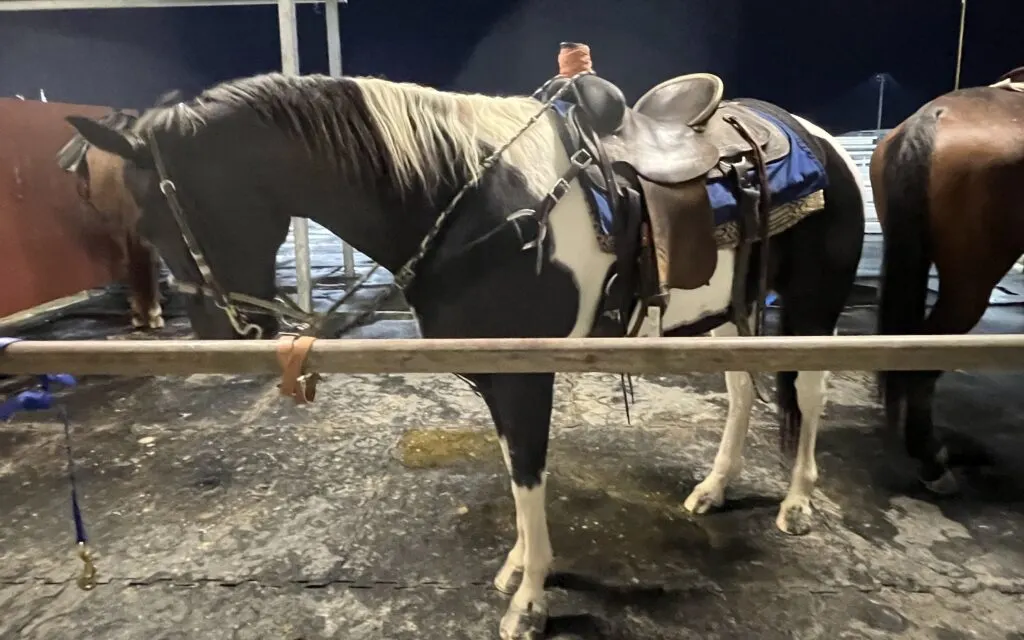
Comprehensive Care Guide for American Paint Horses
Caring for an American Paint Horse involves understanding their unique needs and characteristics. Here’s a detailed guide to help new horse owners provide the best care for their Paint Horses.
Nutrition and Diet
- Balanced Diet: Ensure your Paint Horse has a balanced diet consisting of quality hay or pasture, grains, and supplements as needed. Paint Horses thrive on a diet rich in fiber.
- Hydration: Always provide access to clean, fresh water. Paint Horses require plenty of water for optimal digestion and overall health.
Skin and Coat Care
- Grooming: Regular grooming is essential for Paint Horses, not only for the health of their coat but also to prevent skin issues. Use a soft brush to keep their coat shiny and check for any signs of skin irritation or sunburn, especially in white or light-colored areas.
- Sun Protection: Due to their unique coat patterns, some Paint Horses may have sensitive skin that is prone to sunburn. Apply equine-friendly sunscreen to exposed skin, and provide shade or sun-protective clothing during peak sunlight hours.
Hoof Care
- Regular Trimming: Schedule regular farrier visits every 6-8 weeks for hoof trimming and maintenance. Proper hoof care is crucial to prevent lameness and other hoof-related problems.
- Hoof Inspection: Perform daily inspections of your horse’s hooves for any signs of injury, infection, or foreign objects.
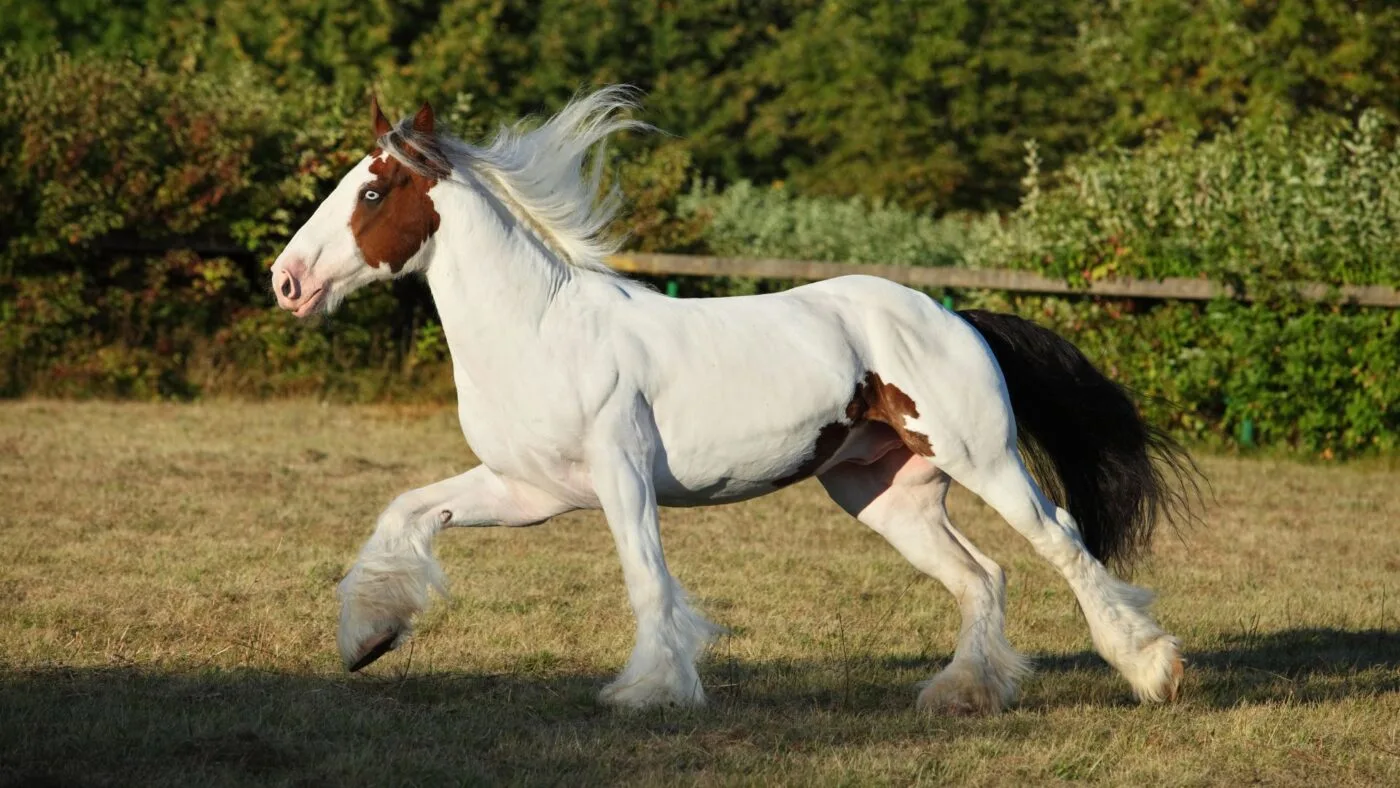
Exercise and Training
- Regular Exercise: Paint Horses require regular exercise to maintain their health and prevent boredom. Tailor the exercise routine to your horse’s fitness level and training needs.
- Training: Start with basic groundwork and obedience training. Paint Horses are intelligent and learn quickly, but consistent, patient training is key to success.
Health Care and Vaccinations
- Regular Veterinary Check-ups: Schedule annual check-ups with a veterinarian to monitor your Paint Horse’s health. Discuss an appropriate vaccination schedule to protect against equine diseases.
- Deworming: Follow a regular deworming program to prevent parasitic infections. Your veterinarian can recommend a deworming schedule based on your horse’s specific needs.
Mental Well-being
- Social Interaction: Paint Horses are social animals and benefit from interaction with other horses. Consider their need for companionship when planning their living arrangements.
- Enrichment: Provide mental stimulation through toys, varied training routines, and opportunities to explore new environments.
Checklist for New Paint Horse Owners
By following this comprehensive care guide, you’ll be well-equipped to meet the needs of your American Paint Horse and ensure they lead a healthy, happy life. Remember, each horse is an individual, so adapt these guidelines to suit your specific horse’s requirements and consult with equine professionals whenever necessary.
American Paint Horses in Action

From the show ring to the open trail, American Paint Horses have made a significant impact, demonstrating their adaptability and skill.
Excellence in Western Disciplines
In the world of Western riding, Paint Horses have become a symbol of excellence. Their agility and speed make them ideal for events like:
- Barrel Racing: Their quick acceleration and nimble movements are perfect for the tight turns and fast sprints required in barrel racing.
- Roping and Cutting: Paint Horses excel in these events due to their strong build and quick response, making them capable partners in handling cattle.
Below is a YouTube video showing the versatility of Paint horses.
Success in English Riding
Paint Horses have also made their mark in English riding disciplines:
- Show Jumping and Eventing: Their power and agility enable them to excel in jumping courses, while their endurance and versatility shine in eventing.
- Dressage: Known for their intelligence and trainability, Paint Horses can perform complex dressage movements with grace and precision.
I remember a Paint Horse named “Whisper” who competed in local dressage competitions. Despite being relatively new to the discipline, his performances were remarkable, displaying both the elegance required for dressage and the distinctive flair of a Paint Horse.
Notable American Paint Horses
- Case Study: “Color Me Smart” – This Paint Horse made history in the cutting arena. Known for his exceptional intelligence and skill, Color Me Smart has won numerous championships and has sired many successful offspring, cementing his legacy in the discipline.
- Story of “Gunner” – A legend in the reining world, Gunner was known for his distinctive coat and extraordinary talent. His performances in national and international competitions left a lasting impression, showcasing the breed’s potential in high-level competition.
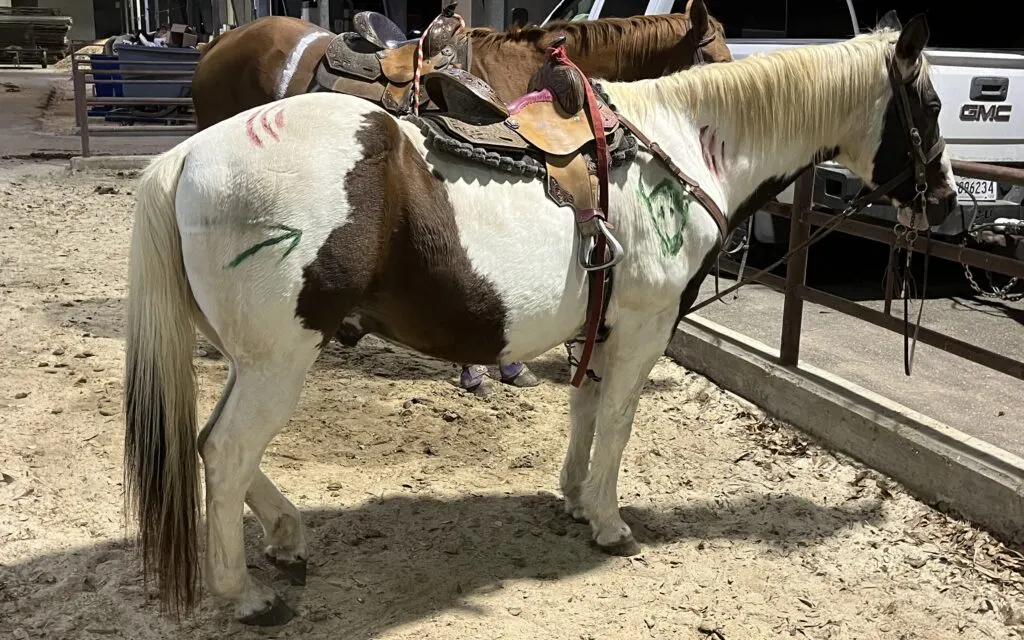
Buying and Owning Paint Horses
What to Look for When Buying
- Health Checks: Look for clear eyes, good conformation, and a smooth coat. Ask for a vet check to ensure no underlying issues.
- Well-Bred Qualities: Seek horses with a calm temperament, good manners, and a willingness to learn. These traits indicate a well-bred Paint Horse.
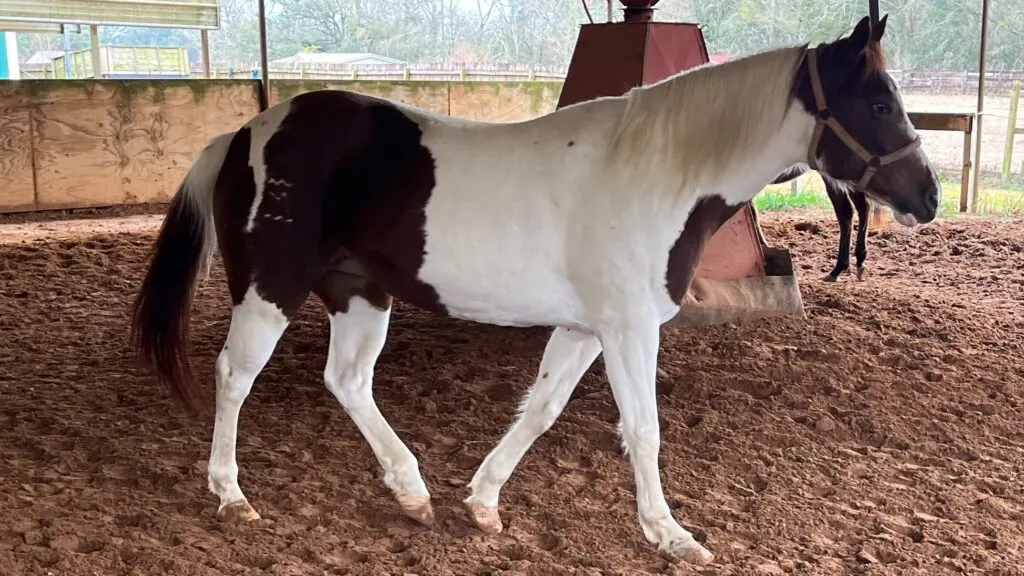
Understanding Registration and Pedigree
- Registration Papers: Ensure the horse is registered with the American Paint Horse Association (APHA) to verify its lineage.
- Pedigree Analysis: A strong pedigree can indicate potential in disciplines like showing, racing, or breeding.
The Responsibility of Ownership
Emotional and Financial Commitments
- Emotional Bond: Owning a Paint Horse means developing a deep, rewarding relationship that requires time, patience, and understanding.
- Financial Responsibility: Be prepared for the costs of feed, veterinary care, boarding, and training, which are integral to their well-being.
What is the Difference Between an Appaloosa and a Paint Horse?

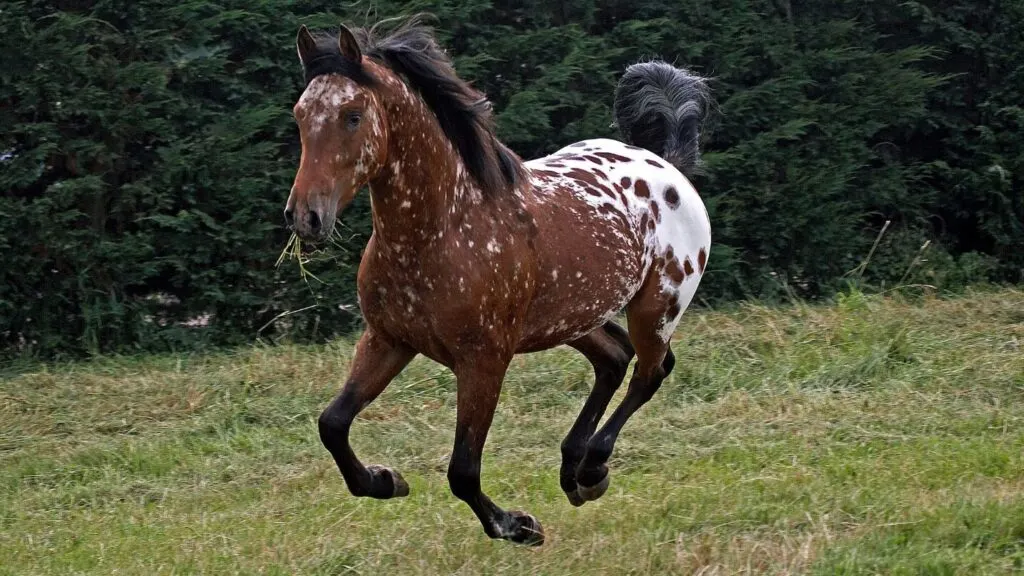
Exploring the differences between paint and Appaloosa horses enhances our appreciation for the distinct qualities of each breed, especially the American Paint Horse’s standout features.
Coat Patterns and Genetics
- Appaloosas have a speckled effect with a mix of white hair over a base color. Notable for the LP gene, striped hooves, and visible sclera.
- Paint Horses are defined splashes of white without the LP gene traits.
Breed History and Conformation
- Appaloosas originated with the Nez Perce tribe and are known for their endurance and work ethic.
- Paint Horses are influenced by Quarter Horses and Thoroughbreds, resembling the Quarter Horse frame.
Breed Associations and Standards
Both have formal associations but differ in genetic and historical backgrounds, making them unique despite some similar coat patterns.
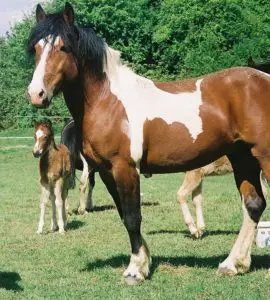
FAQs
Are Paint Horses good for beginners?
Due to their typically calm and friendly nature, many Paint Horses are suitable for beginner riders, though individual temperament and training levels should always be considered.
How is a Paint Horse different from a Pinto Horse?
While both can have similar color patterns, “Paint” refers to a specific breed with specific conformation requirements, while “Pinto” refers to a color pattern that can be found in various breeds.
What is the temperament of a Paint Horse like?
Paint Horses are generally known for their calm, friendly, and adaptable temperament, making them suitable for various equestrian activities and riders of all levels.
What health issues are Paint Horses prone to?
Paint Horses may be prone to skin conditions due to their sensitive white skin and genetic conditions like Overo Lethal White Syndrome (OLWS). Regular veterinary check-ups can help manage these risks.
How long do Paint Horses live?
With proper care, Paint Horses can live well into their 20s. Their lifespan is influenced by factors such as genetics, diet, and the quality of care they receive throughout their lives.
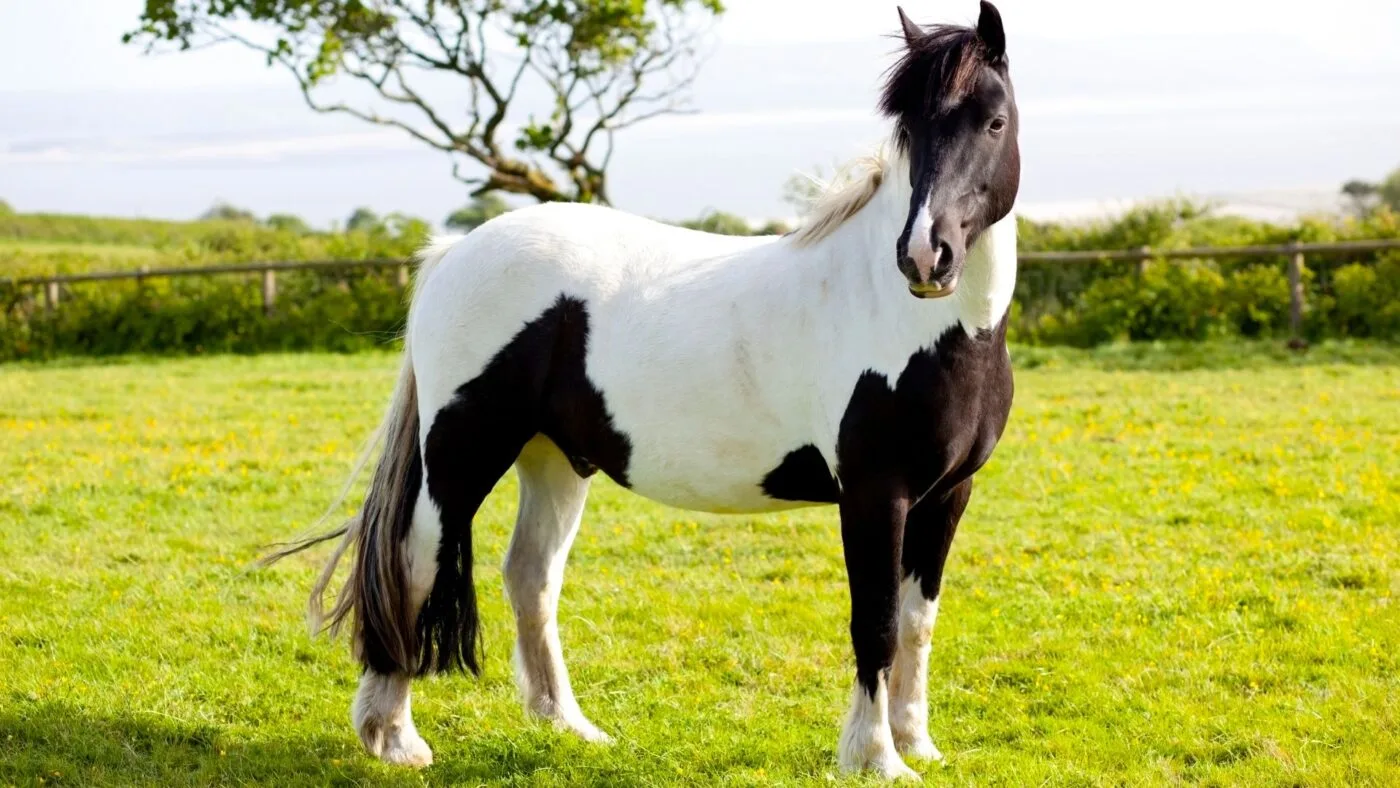
Conclusion: Celebrating the American Paint Horse
As we reach the end of our journey through the world of American Paint Horses, it’s clear that these animals are much more than their stunning coats. They are a breed rich in history, versatile in ability, and remarkable in temperament.
Key Points Recap
- Unique Heritage: We explored the breed’s origins, tracing back to the Spanish explorers and their influence on Native American culture.
- Distinctive Coat Patterns: The Tobiano, Overo, and Tovero patterns define their appearance and contribute to their popularity.
- Versatile Abilities: Whether in Western or English disciplines, therapeutic settings or as family companions, American Paint Horses excel in various roles.
- Gentle Temperament: Their calm and friendly nature suits riders of all ages and experience levels.
- Health and Care: We discussed the importance of understanding their health needs and the commitment required in their care and maintenance.
A Call to Further Exploration
The world of American Paint Horses is vast and full of wonder. I encourage you to continue exploring and learning about this magnificent breed. Whether you’re a seasoned equestrian or a newcomer to the horse world, there’s always something new to discover about American Paint Horses.
Stay Connected and Informed:
- If you found this guide helpful, consider signing up for our newsletter for more insights and horse updates.
- For personalized advice or specific inquiries, feel free to contact me directly. I’m here to help.
Join the Conversation:
- I encourage you to share your thoughts, experiences, or questions in the comments section below. Let’s create a community of informed and passionate horse owners.
- Don’t forget to share this article with your network. Use the social share buttons to spread knowledge and love for horses.
Thank you for reading. I look forward to connecting with you through our newsletter, direct communication, or the comments section. Here’s to the thrilling journey of racehorse ownership!
Poll Question
Additional Resources Section
Here are some valuable resources for further exploration into the world of American Paint Horses:
- American Paint Horse Association (APHA): Visit APHA
- The official site for the American Paint Horse Association offers comprehensive information on breed standards, registration, and events.
- Paint vs. Pinto Horses – Understanding the Differences: Read More
- An informative article explaining the distinctions between Paint and Pinto horses.
- Choosing the Right Horse for Riding: Learn More
- Tips and advice for selecting the best horse for riding, focusing on suitability for different rider levels.
These resources provide a wealth of information for current and prospective American Paint Horse owners and enthusiasts looking to deepen their understanding of this remarkable breed.
Commitment to Regular Updates
This article will be regularly updated to provide the most current information and insights about American Paint Horses. Stay tuned for new stories, tips, and updates to deepen your understanding and appreciation of this extraordinary breed.
Meet Miles Henry
An avid equestrian and seasoned racehorse owner, Miles Henry brings his extensive experience to the equine world, proudly associating with the AQHA, The Jockey Club, and various other equine organizations. Beyond the racetrack, Miles is an accomplished author, having published various books about horses, and is a recognized authority in the field, with his work cited in multiple publications.
🔗 Connect with Miles:
Twitter
Facebook
YouTube: Check out race highlights, horse care tips, and more!

